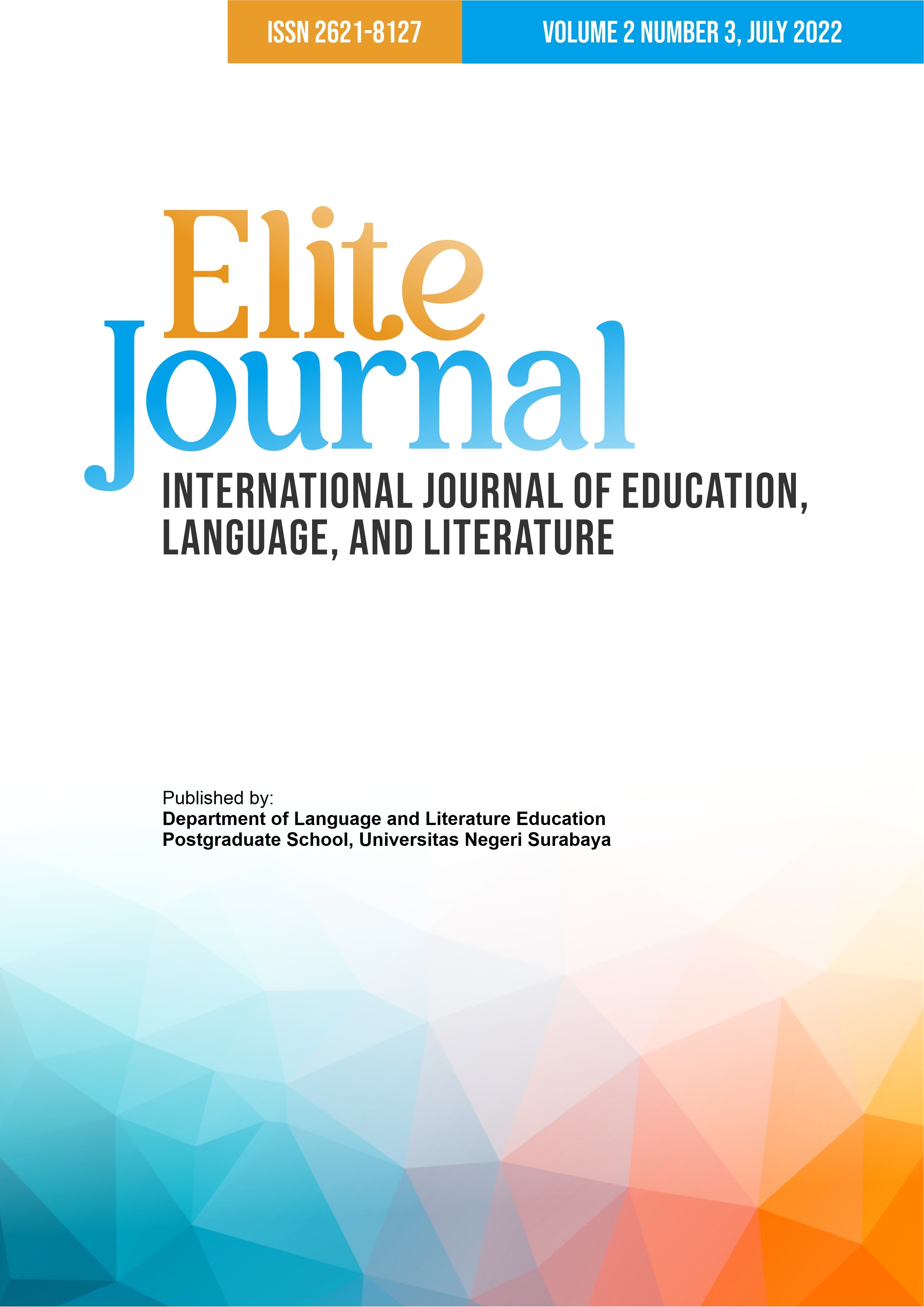ATTITUDE AND MOTIVATION TOWARDS LEARNING ENGLISH AND KOREAN LANGUAGE OF THE KOREAN CULTURE ENTHUSIASTS IN SURABAYA
DOI:
https://doi.org/10.26740/elitejournal.v2n3.p177-192Keywords:
language attitude, cognitive, affective, conative, learning motivationAbstract
This study aims to reveal the language attitudes of Korean culture enthusiasts in Surabaya and their motivations for learning English and the Korean language. It is in line with the increasing interest among the youth, especially in Surabaya, in learning foreign languages, together with the spread of the Korean wave. The data were collected by a questionnaire distributed to respondents who met the criteria of this study via WhatsApp, Instagram, and Twitter. Then, the data obtained were analyzed in different ways. To measure language attitudes, the data were analyzed using a five-point Likert scale. As for learning motivation, the data were analyzed by grouping respondents' answers into motivation categories. The results indicate that the attitude of Korean culture enthusiasts in Surabaya towards English and the Korean language seen from the three components of attitude is included in the "Good" category or can be interpreted as a positive attitude. The slight difference is that their attitude towards English is greater than that of the Koreans. The researchers also find four categories of motivation of the respondents: integrative, instrumental, intrinsic, and extrinsic.
References
Calder, T. (2003). The apparent banality of evil: The relationship between evil acts and evil character. Journal of Social Philosophy, 34(3), 364-376.
Carlyle, T. (2001). On heroes, hero-workship, and the heroic in history by Thomas Carlyle, the Pennsylvania State University. Electronic Classics Series, Jum Manis, Faculty Editor, Hazleton, PA, 18201-1291.
Frisk, K. (2019). What makes a hero? theorising the social structuring of heroism. Sociology, 53(1), 87-103.
Gehrmann, R. (2019). War, snipers, and rage from Enemy at the Gates to American Sniper.
M/C Journal, 22(1).
Irawati, Y. (2010). Between civil liberty and national security in James Mcteigue'sv for Vendetta (2006): A sociological approach (Doctoral dissertation, Universitas Muhammadiyah Surakarta).
Kaufman, E. K., Rateau, R. J., Carter, H. S., & Strickland, L. (2012). What's context got to do with it? An exploration of leadership development programs for the agricultural community.
Krotov, A. A. (2021). Saint-Simon and Napoleon: The emperor's personality and the philosopher's worldview. Voprosy Filosofii, (3), 185-195.
Voytilla, S. (1999). Myth and the movies: Discovering the mythic structure of 50 unforgettable films (p. 47). Studio City, CA: Michael Wiese Productions.
Weber, M. (1978). Ethnic groups. In New tribalisms (pp. 17-30). Palgrave Macmillan, London.
Downloads
Published
How to Cite
Issue
Section
 Abstract views: 586
,
Abstract views: 586
, PDF Downloads: 678
PDF Downloads: 678






